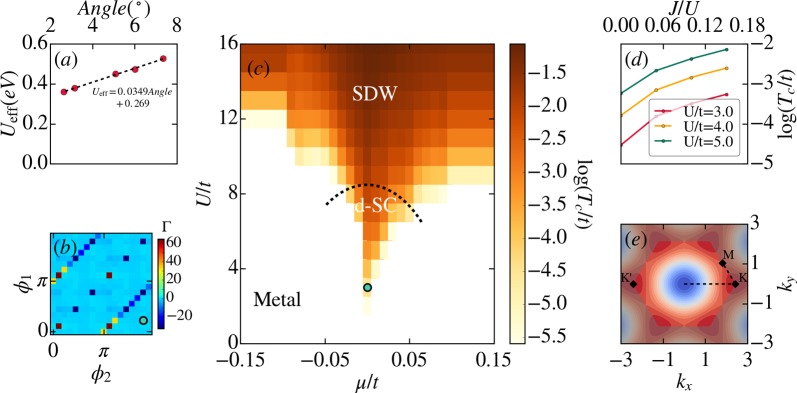Figure 3.
Correlations in twisted bilayer boron nitride. (a) Interaction parameter as obtained by DFT+U without doping. (b) Structure of the effective two-particle interaction Γ (k1, k2, k3) at the end of the FRG flow for fixed ϕ3 (angle of momentum k3) dependent on the remaining two angles ϕ1 and ϕ2 (of momenta k1 and k2) for U = 3t as well as μ/t = 0 and J = 0. Dominant features along the diagonal (incoming momenta sum to zero) as well as the alternating sign (negative (red) to positive (blue)) signal a d-wave pairing instability. (c) Phase diagram dependent on U/t and μ/t for J = 0 (values of J in the single digit percent regime as found by DFT+U do not affect the phase diagram qualitatively). We distinguish metallic, d-wave and spin density wave behavior. The false color plot indicates the estimated transition temperature. (d) Influence of the Hund’s coupling J on the transition temperature for different values of U/t. DFT+U puts J/U in the single digit percent regime where its influence does not to alter the found phases but can increase the transition temperature. (e) False color plot of the dispersion relation in the full Brillouin zone (nonshaded area). The paths plotted for the dispersion relation in Figures 1 and 2 are shown as dashed lines.

